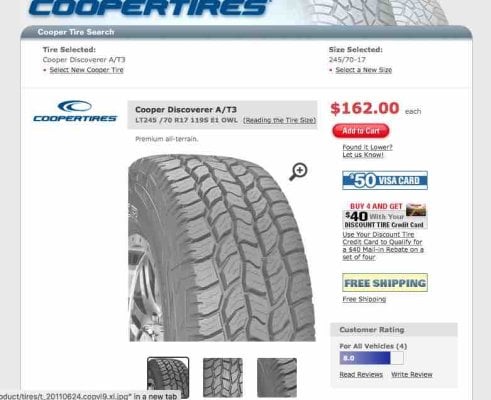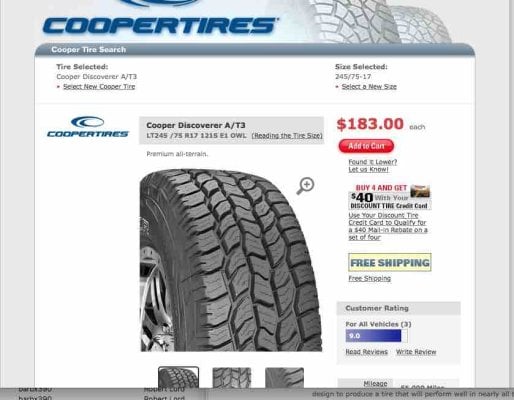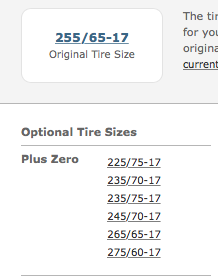JHanson
Senior Member
This is weird. If the nominal tire sizes are the same, any minuscule variation in diameter between brands will make zero difference. After all, tire diameter changes fractionally as the tire wears, and the onboard electronics must cope with that.
ABS sensors measure the difference in wheel rotational speed and would not be affected by a few millimeter difference in size.
TPMS monitors air pressure, period. The sensor has no idea what kind or size of tire is on the wheel. A Super Swamper at 35 psi looks the same to it as a Michelin Pilot Sport at 35 psi.
No anti-skid or stability-control system I know of would be affected by changing tires to a different brand or tread pattern if the size stayed constant.
Unless someone points out something of which I'm unaware, I think this is pure CYA nonsense on the part of the dealer or manufacturer.
ABS sensors measure the difference in wheel rotational speed and would not be affected by a few millimeter difference in size.
TPMS monitors air pressure, period. The sensor has no idea what kind or size of tire is on the wheel. A Super Swamper at 35 psi looks the same to it as a Michelin Pilot Sport at 35 psi.
No anti-skid or stability-control system I know of would be affected by changing tires to a different brand or tread pattern if the size stayed constant.
Unless someone points out something of which I'm unaware, I think this is pure CYA nonsense on the part of the dealer or manufacturer.



